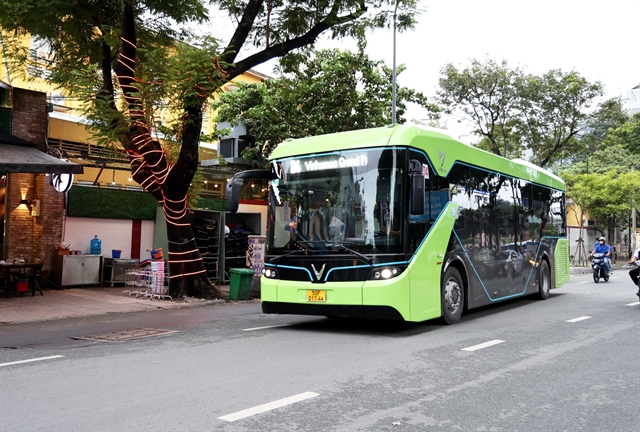 Environment
Environment

Fly ash from
 |
| Inside one of Hà Tĩnh Formosa Steel’s production mill. — VNA/VNS Photo Hoàng Ngà |
HÀ NỘI — Fly ash from
The ministry’s response came a few days after media reports that waste from the Hà Tĩnh-based manufacturer, the one responsible for the devastating 2016 marine ecological disaster in Central Việt Nam, was used in the production of a cement producer without approval from local authorities, raising safety concerns.
The reuse of the byproduct from combustion of coal, estimated at 16.4 million tonnes a year, is necessary to offset the environmental impacts of the country’s increasing reliance on thermal power, the Việt Nam Environment Administration (VEA) said.
According to reports, Sông Gianh Cement JSC in Tiến Hoá Commune of
However, when the newspaper produced videos showing Lê Nam trucks going in and out of FHS, Nguyễn Văn Thành, director of Sông Gianh JSC, responded that Lê Nam’s transport of the fly ash was unauthorised and that his company had told Lê Nam that they should not acquire ash from FHS due to “sensitiveness surrounding this company,” referring to the simmering public anger over the company’s past irresponsibility in handling its waste—the main cause of the massive pollution incident in 2016.
Lê Thanh Hải, director of the Lê Nam transport company, later admitted the company indeed had deployed “a few trucks” to carry ash from FHS, as ash from the nearby Vũng Áng thermopower plant “was not sufficient.”
According to the Quảng Bình environment department, Sông Gianh JSC had asked the authorities for permission to buy fly ash from FHS, but the department has told the provincial authorities to refrain from giving permission to the company, also because of sensitivities towards
Carefully regulated
VEA said the construction ministry’s official dispatch to FHS back in 2017 clearly stated that “the Government encourages the use of slag and ash from thermopower generation to produce building materials,” as per the Government Decision 452 in April 2017.
Experts contended that even though FHS’ fly ash passed the initial quality test by the environment authorities, this approval couldn’t be used as an inherent authorisation for the waste to be sold off, as every batch still needs to be inspected before it may be used for other purposes.
In addition, it was alleged that FHS bought coals from a variety of sources and could not ensure consistent quality of coals and the resulting ash.
VEA responded that since 2016,
Earlier this year, VEA received the request from Sông Gianh to use FHS waste to produce cement, and gave its approval on the condition that the materials must meet current technical demands and that the company has the responsibility to monitor the transport of ash by the Lê Nam company.
VEA said the reuse of fly ash was always encouraged by other countries, such as
The environment ministry in the coming time will continue pushing for the reuse of fly ash as well as proper inspection of such activities. — VNS




